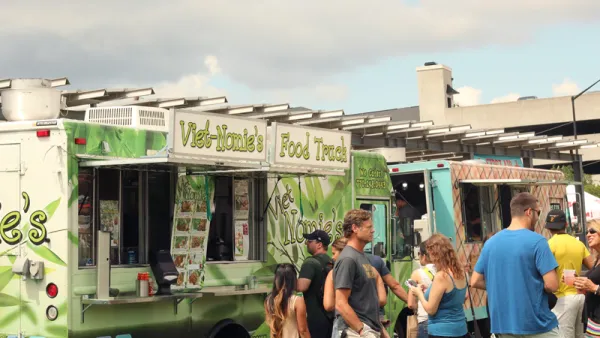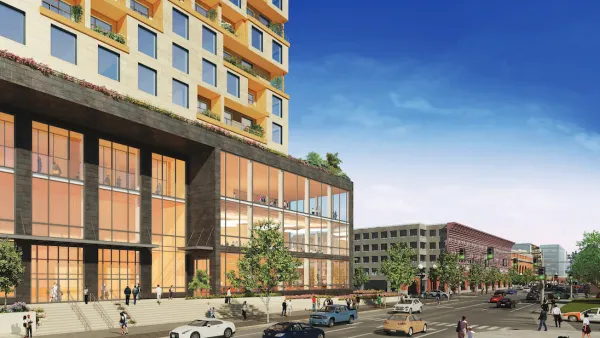The city has reinvented itself in many ways, but its residents are not reaping those benefits equally.

Atlanta has changed over recent decades and gone mainstream, with its thriving film industry, hip hop scene, upscale developments, and amenities like the BeltLine, writes Marsha Shalhoup. "However, in this majority-black city—one that has earned its prominence thanks in large part to the contributions of black Atlantans—it is still white Atlantans who are benefiting most."
She says that two factors contributed greatly to Atlanta’s transformation starting in the 1990s: the state’s HOPE scholarship program and the HOPE VI federal grant that replaced public housing with mixed-income developments. Ultimately, these programs did not help the Atlanta residents who needed it the most as income and college attendance gaps between blacks and whites widened.
Shalhoup returned to Atlanta in 2018 and says that she did not recognize parts of the city she knew well, previously rundown areas that gentrification wiped clean. "If this influx of wealth were benefiting people equally, or even sort of equally, these changes would be easier to accept. And they would be easier to accept if more had been done to preserve the affordability of these intown communities as they were transforming," she adds.
FULL STORY: It’s the best time to be an Atlantan. It might also be the worst.

National Parks Layoffs Will Cause Communities to Lose Billions
Thousands of essential park workers were laid off this week, just before the busy spring break season.

Retro-silient?: America’s First “Eco-burb,” The Woodlands Turns 50
A master-planned community north of Houston offers lessons on green infrastructure and resilient design, but falls short of its founder’s lofty affordability and walkability goals.

Delivering for America Plan Will Downgrade Mail Service in at Least 49.5 Percent of Zip Codes
Republican and Democrat lawmakers criticize the plan for its disproportionate negative impact on rural communities.

Test News Post 1
This is a summary

Test News Headline 46
Test for the image on the front page.

Balancing Bombs and Butterflies: How the National Guard Protects a Rare Species
The National Guard at Fort Indiantown Gap uses GIS technology and land management strategies to balance military training with conservation efforts, ensuring the survival of the rare eastern regal fritillary butterfly.
Urban Design for Planners 1: Software Tools
This six-course series explores essential urban design concepts using open source software and equips planners with the tools they need to participate fully in the urban design process.
Planning for Universal Design
Learn the tools for implementing Universal Design in planning regulations.
EMC Planning Group, Inc.
Planetizen
Planetizen
Mpact (formerly Rail~Volution)
Great Falls Development Authority, Inc.
HUDs Office of Policy Development and Research
NYU Wagner Graduate School of Public Service





























